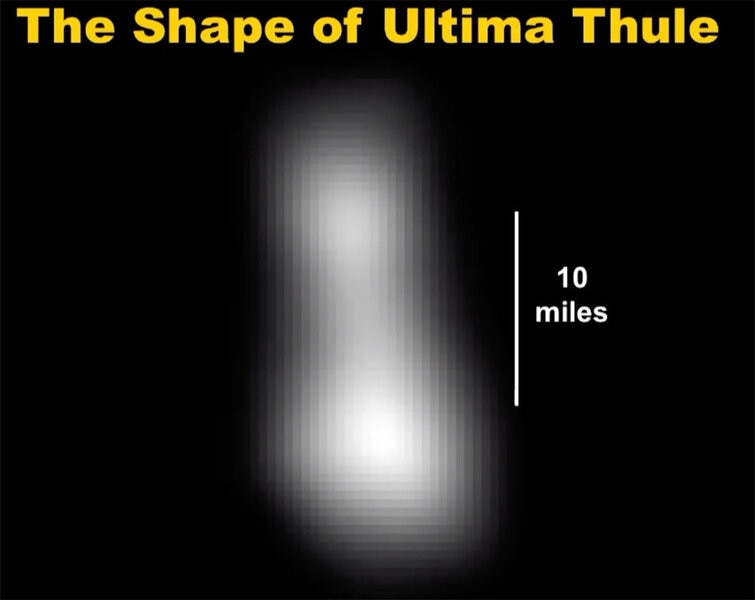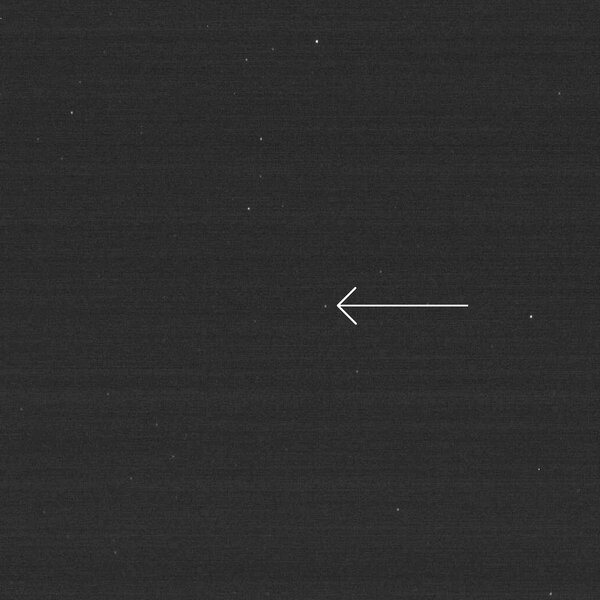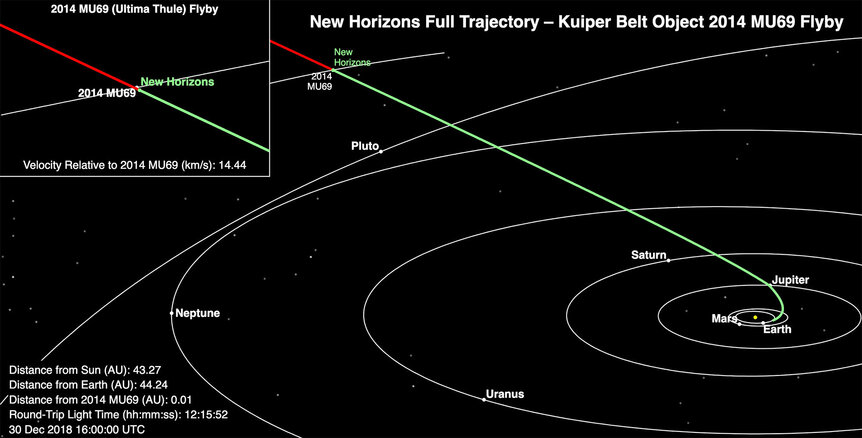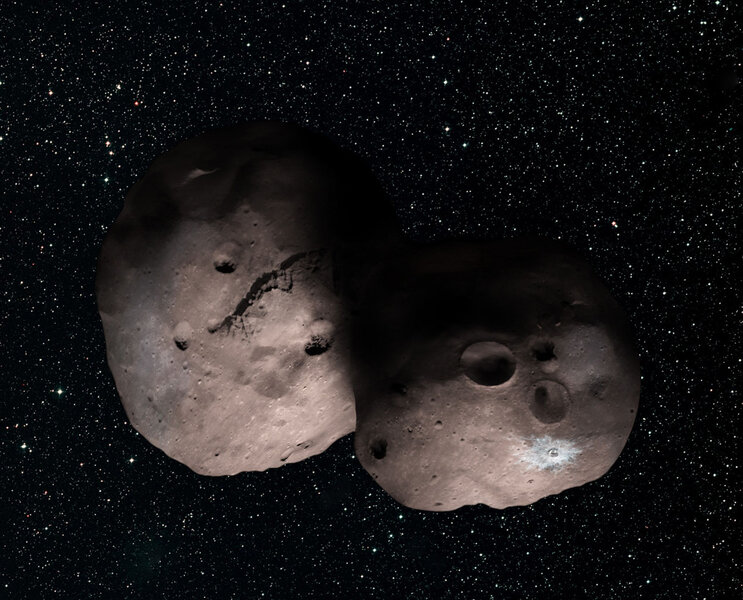Create a free profile to get unlimited access to exclusive videos, sweepstakes, and more!
UPDATE: Get ready for humanity's most distant encounter: 2014 MU69!
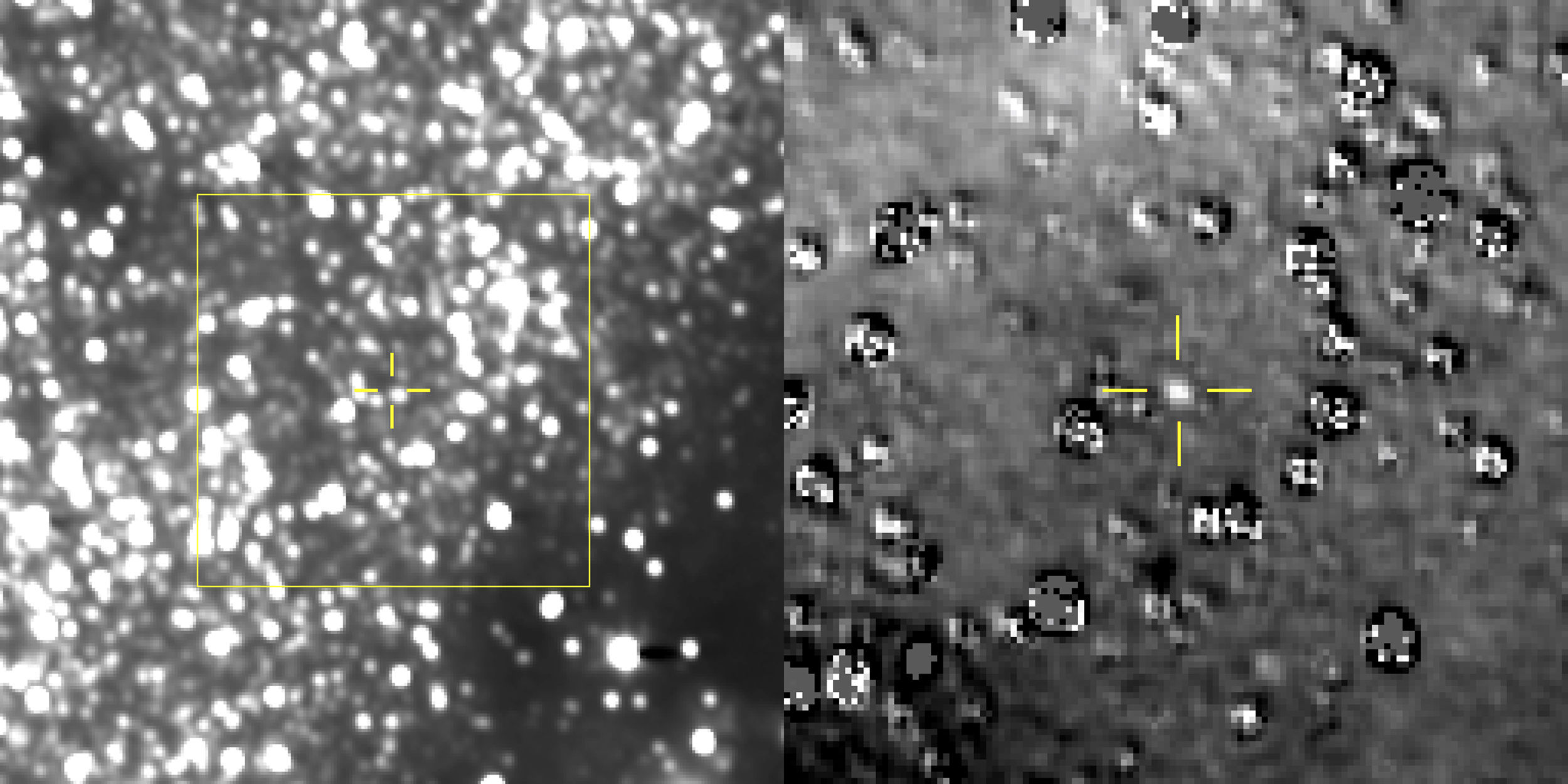
This article was originally published on December 31, 2018, at 9AM ET and updated the morning of January 1, 2019. Details below.
Very late tonight (or very early tomorrow morning, if you prefer), the New Horizons spacecraft will perform the most distant flyby of an astronomical object ever attempted by humanity. At 05:33 UTC on January 1, New Year's Day, it will pass about 3,500 kilometers from 2014 MU69, a strange lump of ice and rock orbiting the Sun well past Neptune. If successful, the probe will return the first close-up images of an in situ Kuiper Belt Object, transmitting the data from a staggering 6.6 billion kilometers from Earth.
So yeah, this is kind of a big deal.
[UPDATE (Jan 1., 2019, at 16:45 UTC): During a press conference, the New Horizons team announced that the spacecraft is healthy, working well, and in fact took all the data it was programmed to! We won't get the first high-resolution images until Jan. 2, but they released a low-resolution image taken pre-flyby from about 800,000 km away:
As you can see it's elongated... but this image doesn't quite have the resolution to determine if it's peanut-shaped or if it's two separate objects in orbit around each other. We'll hopefully find out for sure tomorrow when better images come in.
Below I also mention the light curve of 2014 MU69 — the variation in brightness as it rotates — and how it doesn't appear to have much. I gave some possible reasons, including that the spacecraft sees the object "pole-on," so as it spins no new features come into view. That appears to be the case! So that's already one mystery solved.
I hope to have more info for you tomorrow. Stay tuned! And congratulations to the New Horizons team!]
You may remember New Horizons as the spacecraft that flew by Pluto in July 2015 and returned a wealth of data of the tiny icy world, including gorgeous images that changed the way we see and think of the outer solar system.
But the solar system doesn't end with Neptune and Pluto. There is a bagel-shaped volume of space out there occupied by millions of objects that are composed mostly of rock and ice. For historical reasons this is called the Kuiper Belt. Predicted to exist for decades, the first Kuiper Belt Object (or KBO) wasn't discovered until the 1990s… and now we know of thousands. Some people (including me) consider Pluto to be the largest of these objects known so far.
Even before the Pluto flyby in 2015, a search was on to look for a potential second target for New Horizons in the Kuiper Belt. The story behind that is really cool — team member Alex Parker wrote a great blog post for NASA about it, as well as a terrific Twitter thread — but to make a long story short, a KBO was discovered by Hubble in 2014 that was close enough along the spacecraft's trajectory to make it a target with the available fuel left. It was given the designation 2014 MU69, though you'll probably hear it referred to as Ultima Thule, an unofficial nickname given to it after a public contest was held by the New Horizons team.
We still don't know much about MU69. It's so far away and so small that it can barely be seen by Earth-bound telescopes, and even New Horizons didn't spot it until August 2018. Its orbit is mildly elliptical and keeps it over 6 billion kilometers from the Sun, well over a billion kilometers farther out than Pluto. Some clever observations showed that MU69 is either two objects orbiting each other very closely (making it a binary object) or a double-lobed object like the comet 67P/Churyumov-Gerasimenko. The two components are likely around 20 kilometers across (and maybe smaller). We know it's reddish in color, as many such objects are (ultraviolet light from the Sun breaks down carbon-based molecules which rearrange themselves into more complex molecules called tholins, and these tend to be red).
And that's about it. But in a few days we'll know a lot more.
I strongly, strongly urge you to read my friend Emily Lakdawalla's breakdown of tonight's encounter that she wrote for The Planetary Society. As always, her article is clear, interesting, and has all the info you need to understand what's what.
There are a few points I want to make, too.
One is that because MU69 is so small and faint, and was only discovered recently, we don't know its position precisely. It's known well enough to plan the flyby, but as New Horizons gets closer that uncertainty literally looms larger. Remember, too, that MU69 is only 20 – 40 kilometers across or so… and New Horizons will be screaming past the KBO at a relative speed of 14 kilometers per second — more than 50,000 kilometers per hour. Because of this, MU69 won't be much more than a pixel or three across until almost the encounter itself.
Engineers are playing it safe, and have programmed the spacecraft to return some images early on from far enough away that they're confident MU69 will be in the shot, and then again some from closer in, where it will be big enough to see some details. But the encounter is so fast that the spacecraft will be performing a preprogrammed set of observations during the encounter itself, spending all its time examining MU69. The images won't be sent back until after it passes… and even then it takes the radio waves, traveling at the speed of light (because they are light), six hours to get back to Earth. Even then they won't be released to the public until the scientists get a chance to take a look and clean them up a bit (raw data off a spacecraft generally needs to be processed to make them easier to examine), so it may be a day or so before we start to see the actual images.
And what will we see? That's a good question. There's been some interesting news that the brightness of MU69 over time (what astronomers call the light curve) is pretty flat, which is weird. If it were elongated (or two objects orbiting each other) then you'd expect it to get brighter and dimmer over time as it rotates. If the surface is patchy you'd expect the brightness to change to as it rotates as well. Yet nothing like that has been seen. Is it featureless? Or do we happen to see it looking straight down on one of its poles, so that as it spins we don't see new features roll into view? That last bit seems unlikely, since we've seen it has two big components, and it's hard to see how we'd be able to separate them yet be looking down the pole. So that's odd.
Are there smaller moons orbiting the main body? Could it have rings? Is there a dust cloud around it? Is the surface smooth or rough, hilly or flat, cratered or smooth? All of these are important questions that will tell us a lot about this distant object, and all of them, hopefully, will be answered by New Horizons.
And they'll be answered in the next few days.
Having said that, I'll add that for the next week I will be on Star Trek: The Cruise III, where the internet is patchy. I will likely not be able to write about any images that come down. So check the SYFY homepage for other authors' views, follow Emily on Twitter, and also her Twitter list of people covering the flyby. You can also follow the New Horizons mission on Twitter, and hey: Give Alex Parker a follow, too.
Let's see what's out there.
